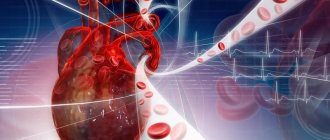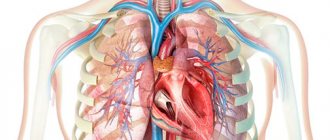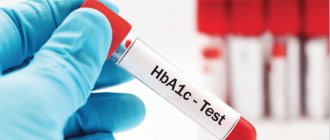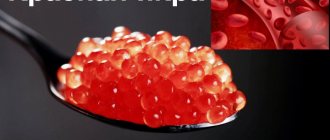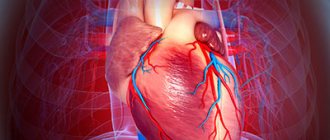To do or not to do, to take or not to take medicine, to take a test or not to take a test. We are always faced with a choice and are often afraid of making a mistake. Iron can be said that you can’t go wrong with iron.
The adult human body contains about 3–4.5 g of iron. More than half of the iron is represented by heme in the composition of hemoglobin, a third is stored in the depot in the form of ferritin and hemosiderin. Moreover, iron deficiency is the most common deficiency condition worldwide, silently leading to anemia.
The main causes of iron deficiency:
Reduced intake of iron into the body due to impaired absorption due to diseases of the gastrointestinal tract, fasting, refusal, or reduced consumption of foods containing iron.
Increased iron loss during chronic, repeated blood loss (uterine, gastric, intestinal, etc.), as well as during acute massive bleeding.
Increased consumption of iron by the body in children during periods of growth, in women during pregnancy and subsequent breastfeeding of the child.
How does drinking alcohol affect test results?
After a large feast with drinks containing ethyl alcohol, the composition of physiological fluids changes. Even a small amount of alcohol increases ESR (erythrocyte sedimentation rate); complicates the functioning of the hematopoietic system, and therefore increases the production of leukocytes (white blood cells). Due to failure of glomerular filtration and increased load on the liver, the content of cholesterol and phospholipids in erythrocytes (red blood cells) increases.
What tests show iron deficiency?
- Be sure to look at a general blood test with a leukocyte formula, since iron deficiency ultimately leads to the development of anemia. Iron deficiency anemia is indicated by a decrease in hemoglobin levels, an indicator of MCV (erythrocyte hypochromia). Often, the examination begins when there are symptoms of anemia (pallor, weakness, dizziness, loss of strength, decreased performance and attention, brittle nails and hair, etc.).
- Decreased serum iron concentration
- Increasing the total iron-binding capacity of serum
- Decreased transferrin saturation coefficient with iron
- Decreased serum ferritin concentration
It is recommended to take tests in the morning, from 8 to 11 am, since the level of iron in the serum is higher in the morning. They should also be taken in the absence of inflammation, which helps lower transferrin levels and increase ferritin levels.
The iron content in the serum is checked 5-7 days after taking vitamin-mineral complexes and dietary supplements containing iron, or short-term use of iron supplements.
How much alcohol can you drink per day
When calculating a dose that does not cause pathological changes in the body, it is necessary to take into account the nationality, gender and age of the person, and medical history. Women have lower levels of alcohol dehydrogenase, the enzyme that breaks down alcohol, so the norm for them is 40-50 ml lower.
A serving of alcohol with a strength of 40% - vodka, rum, brandy, safe for a healthy man:
- 75 ml - up to 5 times a week;
- 150 ml - once every 6-7 days.
A lethal dose is a single dose of 10-12 ml of ethyl alcohol per 1 kg of weight, that is, on average 1.5 liters of vodka, drunk within 1.5 hours.
How is iron deficiency treated?
It is necessary to identify and eliminate the cause of iron deficiency and adjust nutrition.
If these measures do not help, and iron loss is significant, your doctor may prescribe iron-based medications. Duration of treatment with iron preparations for the purpose of restoration and replenishment of iron reserves in the depot:
- for hidden iron deficiency 1-2 months,
- for mild anemia 3 months,
- with moderate anemia 4.5 months,
- for severe anemia 6 months.
Of course, first of all, iron supplements are used in the form of tablets, drops, capsules, syrups. If your doctor has prescribed you iron supplements, you need to be prepared for long-term and comfortable treatment. This will help by following simple rules.
The dosage of the drug is also determined by the presence of anemia (this is the full therapeutic dose) and the type of iron ion that is included in the drug.
Contraindications to drinking alcoholic beverages
You should not adjust your hemoglobin level with alcohol:
- in acute inflammatory processes of the urinary system;
- prostate diseases;
- in the presence of large stones in the kidneys and gall bladder;
- with atherosclerosis, thrombophlebitis, varicose veins, high risk of heart attack and stroke;
- with cirrhosis or impaired liver function;
- with renal failure.
A relative contraindication is pregnancy. At this time, hemoglobin levels often drop, but it is better to increase it with iron-containing foods or medications. If you really want to drink, you should limit yourself to 1 glass of dry red wine once a week, but not earlier than the 2nd trimester. Alcohol disrupts fetal development.
Alcohol abuse has a negative effect on the hematopoietic system and reduces hemoglobin levels. But it is not recommended to reduce the absorption of iron with drinks that contain ethyl alcohol. Alcohol does not inhibit the production of red blood cells, but destroys their structure - metabolic processes are disrupted, and health deteriorates.
What iron supplements are there?
Iron in preparations can be represented by a di- or trivalent ion, designated Fe2+ or Fe3+, which is part of salts or complex complexes (for example, polymaltose complex hydroxide).
When using iron salts, you may encounter problems with its absorption. Unfortunately, not all iron from the drug is absorbed in the gastrointestinal tract. Moreover, this process is poorly controlled, since it depends on the state of the gastrointestinal tract, food taken, and other medications. Therefore, both a lack of incoming iron and an overdose are possible. In addition, not all forms of medication are convenient to use; if some tablets are chewed, the enamel of the teeth is often stained and a metallic taste remains in the mouth for a long time. Trivalent iron preparations usually do not have these side effects.
Other complications after Covid
What other complications can arise after Covid? In addition to the respiratory system, the virus affects the heart, blood vessels and central nervous system, especially on those who have suffered a severe illness. Those who have had a mild form of the disease may experience depression, weakness, and loss of smell.
Often, patients who have recovered from COVID-19 seek help from a neurologist and psychiatrist to get rid of anxiety, panic attacks, and acute insomnia. This is due to the effect of the virus on the central nervous system. Such consequences of coronavirus can last for several months.
According to pulmonologist Alexander Palman, associate professor of the Department of Therapy of the First Moscow State Medical University named after. Sechenov
, tragic and fatal complications occur in those who have suffered a severe form of the disease with lung damage up to 70–80%. Severe complications can occur in two scenarios:
- The direct effect of the virus on a particular organ or tissue;
- The body's defense response to infection, which doctors call a cytokine storm. This reaction causes severe inflammation that damages organs.
Therefore, when treating seriously ill patients, hormonal agents that suppress the cytokine storm are used. To avoid thrombotic complications, the treatment regimen includes anticoagulants, since thrombosis with coronavirus is a common occurrence, and they can easily provoke a stroke.
The virus can have a direct effect even on the musculoskeletal system, and this does not arise from the fact that a person lies ill for a long time. According to doctors, this infection should not be underestimated, because it can affect organs completely unexpectedly and in a wide range.
How to increase the effectiveness of treatment
To reduce the likelihood of side effects, iron salts are taken before meals.
The absorption of iron is higher when taken simultaneously with ascorbic and succinic acids, fructose, and cysteine. This property is used in some combination drugs.
Iron absorption is reduced by certain substances from food or medications. Thus, it is reduced by tannin (strongly brewed tea), calcium salts (in milk or medications), magnesium and manganese (in mineral complexes or antacid preparations, such as phosphalugel), tetracycline antibiotics, phosphoric and phytic acids (cereal seeds, legumes). This effect is smoothed out when using preparations based on ferric iron.
Iron absorption is increased in severe iron deficiency. Therefore, you should be more careful about the prescribed dosage. Doctors often rely on a therapeutic dose of 200 mg of iron ion/day. If you understand that an iron supplement is not suitable for you due to the development of adverse reactions, difficulties in taking it, or lack of improvement in your well-being, tell your doctor about this. Under no circumstances should you change the dosage of the drug yourself. Exceeding the dose can lead to overdose and poisoning, reducing the dose can lead to useless use and lack of effect.
What happens to the blood due to alcohol?
Absorption of ethanol begins in the oral cavity through the mucous membrane. Large vessels are located under the tongue, the first portions of alcohol are absorbed through the membranes, and signals enter the central nervous system. Already at this stage, euphoria and excitement, a feeling of relaxation, and “love for the world” appear.
Interesting ! Alcohol doesn't affect everyone the same. For some, on the contrary, suspicion increases, anxiety and irritability arise.
The changes are caused by the direct effect of ethanol on the centers of the brain - thanks to impulses coming from the central nervous system, muscles relax, vascular spasms are eliminated, and blood pressure decreases.
But as soon as the signals reach the liver and kidneys, which begin detoxification activities, the picture changes completely. The volume of blood pumped through the organs increases, and the overall tone increases. A paradoxical situation arises: due to the increased load on the hematopoietic organs - the liver and spleen - the blood thickens, but the hemoglobin level does not increase. This increases the risk of developing blood clots.
How is the effectiveness of treatment assessed?
During the first days of treatment with iron supplements, physical sensations are assessed.
When treating anemia, on the 5-8th day of treatment, a reticulocyte crisis is determined (an increase in the number of reticulocytes compared to the initial value, usually by 2-3% or 20-30‰).
After 4 weeks of treatment, the increase in hemoglobin is assessed. An increase in hemoglobin concentration by 10 g/l by the end of the first month of treatment with iron preparations indicates that the dose has been correctly selected and the effectiveness of therapy. After hemoglobin is restored, therapy is continued to saturate the iron depot, while the dose of the drug is reduced by 2 times.
For hidden iron deficiency, half doses of the drugs are used for 4-8 weeks. Depot saturation is determined using a comprehensive biochemical study (ferritin, transferrin, TLC).
At Lab4U you can take tests to identify iron deficiency and monitor the effectiveness of therapy with a discount of up to 50%.
The effect of beer on the human body
Beer is a drink produced by the alcoholic fermentation of malt wort using brewer's yeast, usually with the addition of hops. The ethyl alcohol content in most types of beer is 3–6% vol. (sometimes higher, strong drinks usually contain 8% vol., maximum - 14% vol.), dry substances (mainly carbohydrates) - 7-10%, carbon dioxide - 0.48-1.0% (according to materials Wikipedia).
Beer advertising shows us that beer is a path to easy communication, an attribute of fun and relaxation after a well-deserved day of work. But that's what advertising is for. And it is ingrained in the mind that beer is a low-alcohol drink and is less harmful than strong alcoholic drinks. However, beer - we emphasize once again - contains ethyl alcohol and is an alcoholic product.
Let us recall that ethyl alcohol is widely used in industry as a solvent and in medicine as a disinfectant.
Ethyl alcohol entering the body acts on the cerebral cortex: under the influence of alcohol, the predominance of excitation processes over inhibition processes is manifested.
In large doses, ethyl alcohol causes depression of the functions of both the spinal cord and the medulla oblongata. Under the influence of ethyl alcohol, death can occur as a result of paralysis of the respiratory center. In the last decade, acute poisoning with ethyl alcohol ranks first (about 60%) among poisonings with other toxic substances. Alcohol not only causes acute poisoning, but also contributes to sudden death from other diseases (primarily from diseases of the cardiovascular system).
The disguise of alcohol in “low-alcohol” products leads to their consumption more often and in larger volumes. Youth alcoholism most often begins with beer. A bottle of strong beer corresponds to approximately 75 grams of vodka. 32% of alcoholics became alcoholics as a result of systematically drinking beer.
Regular consumption of beer (as well as other alcoholic beverages) causes structural changes in the body, degeneration of tissues and their atrophy: the “bull’s heart” phenomenon, hormonal changes, cirrhosis of the liver, persistent dilation of facial vessels (especially nasal vessels), increases the risk of having children with mental and physical impairment. In addition, alcohol intoxication often causes accidents at home, at work, in transport, etc., and leads to violation of social norms and the law.
Modern brewers are required to use only approved food additives, however, there have been cases when, to ensure the safety of the drink, formaldehyde was added to beer (a disinfectant and deodorizing agent, it is used to preserve anatomical specimens, tanning leather, and for embalming). This substance causes tissue death. And to ensure the preservation of the “beer head”, cobalt chloride was used, which is highly toxic to the body.
Let's take a closer look at beer
Alcohol dilates blood vessels, involuntarily causing an increase in blood pressure. Regular consumption of beer makes this state of the body chronic, and the cardiovascular system has to adapt to a new way of working - as if under increased stress. As a result, the heart muscle “wears out” and cannot cope with its tasks. It turns out that the main harm of beer for a man lies in the occurrence of the most common male diseases - coronary heart disease, strokes, and heart attacks.
Beer, according to research by the World Health Organization, is one of the causes of colorectal cancer. And all because of plant resins, which, being the strongest carcinogens, are found in large quantities in hop cones.
The harm of beer to the body is manifested in gastrointestinal disorders: the stomach suffers from drinking any carbonated drinks, including beer. Carbon dioxide increases the acidity of gastric juice, which leads to gastritis, a disease that creates a favorable environment for the proliferation of Helicobacter pylori. These bacteria cause gastric ulcers, which often develop into cancerous tumors.
The foamy drink disrupts the functioning of the liver (liver cirrhosis, hepatitis), spleen and pancreas. Cold alcohol, or that which is diluted with chilled drinks and ice, is very harmful. The fact is that cold drinks and food negatively affect the spleen, and it is responsible for nutrition and hydration of tissues and muscles and for the distribution of fluids in the body. When the spleen is exposed to cold, fatigue and lack of concentration occur, which leads to weakening of the entire body. When the digestive tract is weakened and cold, it can be accompanied by a lack of appetite, gas, and a feeling of fullness.
The intoxicating drink contains cadaverine, a toxic chemical compound that has a neuroparalytic effect and has a detrimental effect on nerve cells.
Beer is a drink with hormonal activity. Multiple studies have confirmed that beer contains an analogue of female sex hormones, phytoestrogens. By a man's appearance, one can determine whether he is abusing beer or not. After all, for lovers of an intoxicating drink, feminization of the body occurs: fat is deposited in the hips and sides, the breasts and abdomen enlarge, and the amount of hair on the body and face decreases. Over time, men's potency decreases and sperm quality deteriorates. Those who have been drinking beer for 10-15 years are unlikely to avoid impotence.
Finally, the frequent urge to urinate does not train the kidneys at all, but increases the risk of narrowing their blood vessels. In case of modification of the vascular system and in conditions of active consumption of beer in the kidneys, the likelihood of hemorrhage increases, which, in turn, can lead to death.
Despite the fact that the drink made from malt and hops is low-alcohol compared to, for example, vodka or cognac, it becomes addictive 4 times faster than strong alcohol. Beer alcoholism is a disease whose onset is very difficult to track, but it occurs much more often than all other types of alcohol addiction. Due to the low alcohol content, you can drink a lot of beer in one evening. And if you often feel an irresistible desire to “have a glass or two with friends,” if you cannot relax after a hard day without a bottle of beer, if after drinking it you experience short-term memory lapses, think about it: you have quietly become a beer alcoholic.
Based on materials from the Yekaterinburg City Center for Medical Prevention
